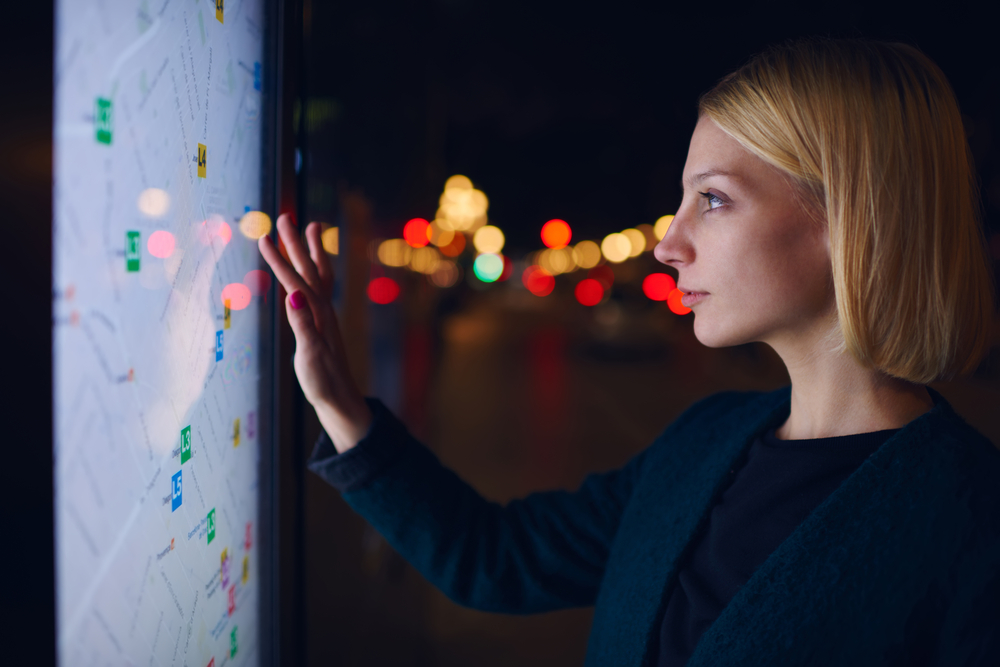At the beginning of this year, a consortium of London universities, NGOs and government agencies pooled their resources into a £24 million IoT research hub in the capital, fortifying London as a global IoT hub.
There’s a lot of momentum around IoT and the application of connected devices across sectors. However, with the cost of semiconductors diminishing and the prominence of self-service analytics platforms, 2016 is seeing analysts move beyond simply collecting this information, and beginning to blend and combine various strands of data for deeper, world-changing analysis.
Only 23% of organisations presently use location intelligence to make business decisions, according to industry research from a leading analyst firm. I believe this is already changing, considering the increasing need for many companies to understand how key variables respond to physical locations to maximise their market footprint.
In the retail sector for example, shoppers will continue to browse and purchase multi-channel, which will make data analytics even more important for customer intelligence. In fact, the UK Commission for Employment and Skills has claimed that data analytics has been the saving grace for retailers, helping them weather the recent recession and contribute £90 billion to the UK economy in 2014.
> See also: What will happen if Google and Microsoft leave the mapping world?
Large retailers stay ahead of the competition by monitoring demographic changes, store revenue projections, and other metrics in relation with each other. In this new age of connected devices, however, leading retailers have started thinking about geospatial data. They are beginning to consider exploring customer data on proximity to the nearest store, for example, to provide personalised customer experiences.
There are a number of opportunities for retailers to explore the potential of connected devices to better understand consumer behaviour. Take beacons, for example, which are tracking where in the store visitors spend most of their time, and which products they spend most time looking at. With this information, store managers can shift their products on the shop floor, and can continue to jig these metrics as they’d like, using real time analytics for guidance.
It’s not just the retail sector benefitting from geospatial analytics. The transportation industry is also capitalising, as more cars become connected, and public transportation systems experiment with automation.
As you’re reading this, the UK is developing and testing connected and autonomous vehicles on roads in Bristol, Coventry, Greenwich and Milton Keynes and government funding of this testing will create over 300,000 additional jobs across related sectors.
In addition to boosting our economy, connected and autonomous vehicles will generate an exceptional volume of data, which will propel data analytics from a ‘nice to have’ to a necessity.
The scope for geospatial analytics may also open up an array of opportunities for consumer engagement and even monetisation for the data owner. This will become another area for technology and insurance companies to corner the market.
Aside from the sectors that are known to bank on IoT, the benefits of geospatial analytics will continue to become abundantly clear this year, especially for unexpected applications. In healthcare, IoT has gained significant traction in patient monitoring applications, and now, even areas such as cancer detection and treatment can deeply benefit from an IoT approach.
Radiopharmaceuticals have been a blessing for cancer research and treatment, but they have a key limitation: they must be used within hours of being made as radioisotopes have very short lives.
Using geospatial analytics to its advantage, the Nuclear Pharmacy division of pharmaceutical company Cardinal Health has found a way to work around this time-sensitivity.
The company is responsible for developing a nuclear medicine, F18, which is used by patients before a PET scan to help detect and even mitigate cancers. Considering that the drug has a half-life of only six hours, of which four are used up in the batch-making process, the biggest challenge for Cardinal Health is to make enough F18 at each of their nuclear pharmacies and get the medication to oncologists and patients within six hours.
> See also: Trains with brains: how artificial intelligence is transforming the railway industry
Cardinal Health collects and blends geospatial data collected across the supply chain against inventory data using Alteryx, and with regression models, map out how much F18 needs to be made and where for efficient delivery and minimal waste. It is just one example of how blending all the data generated by connected devices can save lives. The potential for these technologies in healthcare are boundless, on a global scale.
Analysing spatial and temporal data, healthcare organisations can begin to predict movements of viral outbreaks over time more aggressively now than ever before, which can help the general public prepare for potential epidemics before they even occur.
Data is rapidly moving from a cost centre to a revenue centre. This year, both the public and private sectors are developing a greater understanding of the benefits of blending and analysing IoT generated data for transforming businesses and saving lives.
Sourced from Stuart Wilson, VP EMEA, Alteryx







